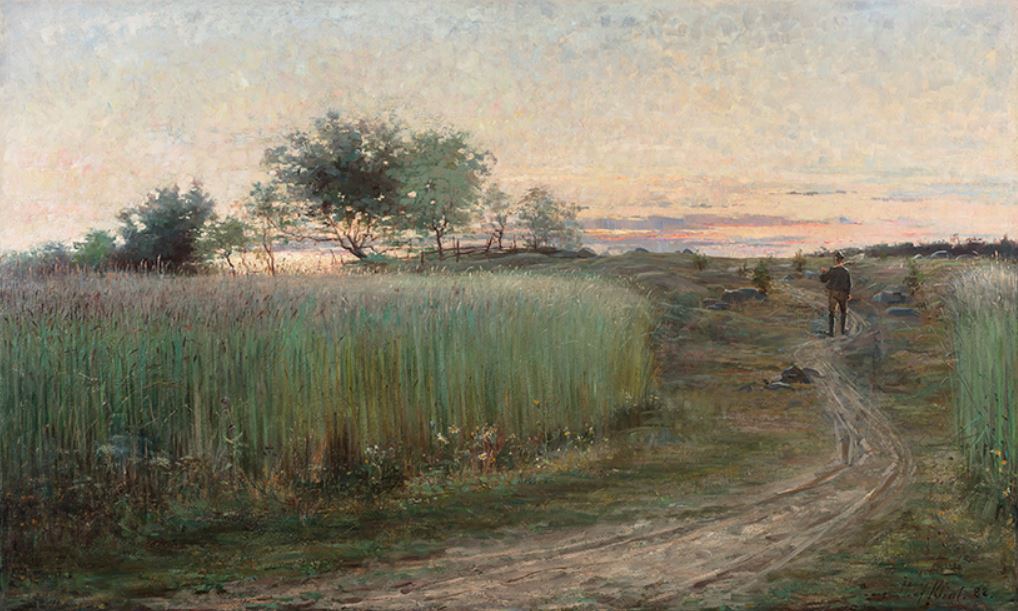Exhibitions
Hilma af Klint: art as a path to the invisible
The Guggenheim Museum approaches the spiritual search of one of the pioneers of abstract art.

There is an invisible force that moves the universe, a subtle energy that, according to Hilma af Klint, transcends the visible and manifests itself in shapes, colors and symbols. This idea guided her life and her work, making her a pioneer of abstract art long before other recognized figures, such as Kandinsky, occupied this place in history.
Born into a family with deep roots in the Swedish Navy, Hilma af Klint grew up surrounded by an atmosphere rich in scientific and cartographic knowledge, marking her formation. The diagrams, maps and geometric structures that dominated his environment are later reflected in his work, through which he conveyed messages of a spiritual dimension, using visual language to explore what is invisible to the human eye.
Af Klint did not limit himself to painting landscapes or portraits, as had marked his academic training at the Royal Swedish Academy of Fine Arts, but embarked on a deep journey to explore the mysteries of existence and the hidden forces that, for to her, they directed the world. His works are intended to be portals to a hidden reality, to a universal order that can only be understood through intuition and spiritual connection. Within his studio he began to develop this much more intimate and introspective painting, keeping many of his works secret for years, waiting for an audience capable of understanding them.

The Guggenheim Museum in Bilbao hosts, until February 2, 2025, an exhibition that allows a privileged immersion in the abstract work of af Klint, with a special emphasis on the series of 'Paintings for the temple', considered by the artist herself as the culmination of her career. In these paintings, af Klint completely freed himself from the limitations of figurative representation, developing a new artistic language, loaded with symbolism and open to multiple interpretations.
'Paintings for the temple', marked a turning point in his artistic career and forever transformed the way of understanding art. This ambitious project, carried out between 1906 and 1915, embodies the essence of his artistic and spiritual research. Through these paintings, af Klint tried to reflect a higher reality, a cosmic structure that unfolds in geometric shapes, vivid colors and universal symbols, breaking the conventions of traditional visual representation.
The pieces are visual abstractions and a manifestation of his dialogue with the spiritual world. According to Hilma af Klint herself, many of these works were created from an automatic process, guided by "great masters" who guided her through her painting. This approach, which comes close to mysticism and spiritualism, placed af Klint in a unique position within the artistic panorama of his time. His goal was to build a temple, a physical place where these works should be displayed to reveal to the public the mysteries they contained. This temple, which he imagined with a helical structure in the center, never materialized, but the paintings were preserved as a legacy that, according to the artist, was not intended for his time, but for future generations.

This series, composed of large pieces with great chromaticism and symbolism, can be interpreted as a cartography of the invisible. Bright colors, such as blue to symbolize the feminine, yellow for the masculine and green as a synthesis of both, are combined with shapes such as spirals, concentric circles, ovals and geometric structures that seem to represent the forces of the universe in constant motion. Each painting is also a representation of the interaction between the opposing forces—good and evil, matter and spirit, masculine and feminine—that, according to af Klint, govern existence.
The show at the Guggenheim also includes a selection of his early, more traditional works that reflect the academic training he received. During the early years of his career, af Klint created figurative paintings that followed the academic conventions of his time. In addition, the exhibition includes his automatic drawings, created in collaboration with the spiritualist group 'Les Cinc', as well as the series after 'Paintings for the temple', dominated by an even more refined geometry and the inclusion of symbols that evoke the mysticism and science of the time.
Af Klint was a pioneer in the representation of the invisible, a visionary who understood art as a tool to reveal the hidden structures of the universe. His decision not to allow his works to be exhibited until two decades after his death reveals his deep conviction that his work would not be appreciated during his lifetime. This choice kept his legacy in the shadows for many years, and only became visible to the public in 1986 in Los Angeles, followed by a first major retrospective in Stockholm in 2013.
Exhibitions like the one now at the Guggenheim allow us to appreciate the true scope of his contribution and also bring us closer to a mystical and spiritual universe that continues to resonate strongly in the contemporary landscape.










